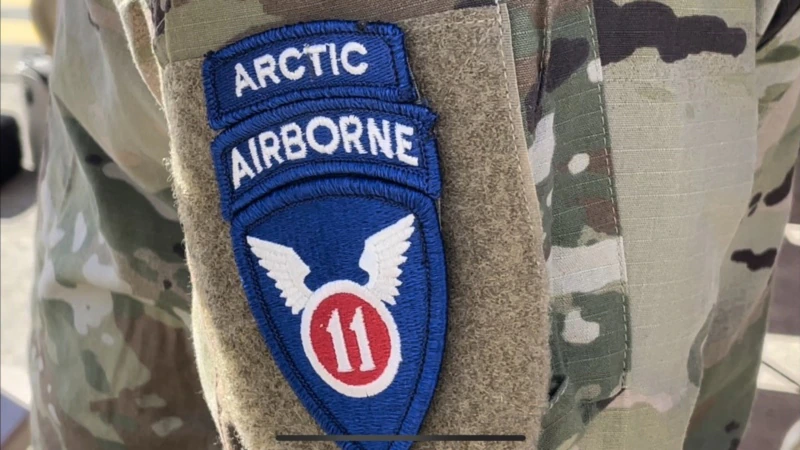The U.S. Army has revamped its forces in Alaska, raising a new 11th Airborne Division to better prepare for future cold-weather conflicts.
The Army says the change marks the first time it has stood up an airborne division in nearly 70 years. Military leaders and Alaskan lawmakers called the move “historic.”
“Wherever you go, you will be the most highly trained, disciplined and fit Arctic war-fighting unit in the world, ready to fight and win,” General James McConville, Army chief of staff, told troops during reflagging ceremonies Monday at Fort Wainwright in Fairbanks before traveling for a second ceremony at the new division’s headquarters at Joint Base Elmendorf-Richardson in Anchorage.
The restructuring comes as Russia and China have increased their presence in the Arctic. Warmer temperatures are opening Arctic sea lanes for longer periods of time, providing more access to military and shipping vessels and more access to the region’s natural resources.
“That is going to be a critical sea lane, and we can’t let Russia dominate it,” Alaska Senator Dan Sullivan told VOA during a recent interview in Fairbanks.
Sullivan added the U.S. is “still behind the power curve” of Russia and China in the Arctic, which U.S. military officials also acknowledge.
But Sullivan told soldiers at the ceremony on Monday that the activation of the 11th Airborne Division “represents a sea change in the Pentagon’s focus in the Arctic” after years of military reductions in Alaska.
More mobile
As part of the 11th Airborne Division’s new structure, the Army is replacing Alaska’s heavily equipped Stryker brigade with a more mobile light infantry unit that will be better suited for operating in the Arctic environment. Stryker brigades use heavy, eight-wheeled vehicles that have not performed well in the extreme cold.
Officials say McConville hopes the changes will give the Army an upper hand in “regaining Arctic dominance.”
“Winning matters,” McConville told soldiers Monday.
The move will not change the overall number of soldiers in Alaska, even though a light infantry brigade is smaller than a Stryker brigade and will give soldiers here more of an Arctic identity, according to U.S. military officials.
The shift from a Stryker brigade to a light infantry brigade will require roughly 300 fewer soldiers, but building up the divisional headquarters at Joint Base Elmendorf-Richardson will require about 300 more soldiers, a U.S. military official told VOA.
McConville said the Army plans to move out the Stryker vehicles within the next few months “before winter sets in.”
‘Arctic Angels’
The 1st and 4th Brigade combat teams previously under the command of U.S. Army Alaska now make up the 11th Airborne Division’s 1st and 2nd Brigade combat teams, respectively.
The 11th Airborne Division is a revival of a World War II-era military unit that fought in the Pacific region toward the end of the war, primarily in the liberation of the Philippines and later the military occupation of Japan. The division’s raid on a Japanese detention camp at Los Banos in the Philippines in February 1945 rescued more than 2,000 civilians.
Nicknamed the “Angels,” parts of the division returned to Asia to fight in the Korean War. The division was inactivated in the 1960s. The rebranded 11th Airborne Division soldiers are called the “Arctic Angels” and now sport an updated version of the division’s vintage insignia.
Before Monday, Alaska’s two major brigades wore the “Tropic Lightning” patch tied to Hawaii-based 25th Infantry Division’s jungle war-fighting tactics.
“Experience has told us that units that have a common unit identity is a source of pride and is extremely important, and the history of a unit and the patch matter,” McConville said.
The division was symbolically stood up on the 78th anniversary of D-Day, when Allied forces in World War II stormed the beaches of Normandy. McConville called on the soldiers based at Fort Wainwright to “live up to the heroic legacy of those who have gone before you.”
Although the 11th Airborne Division didn’t fight in Europe, McConville said it was the division’s innovation and testing that “validate(d) division-level airborne operations that lead into the successful execution of D-Day.”

